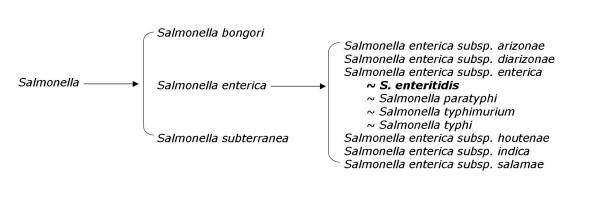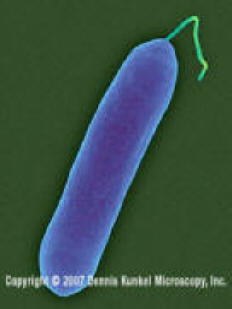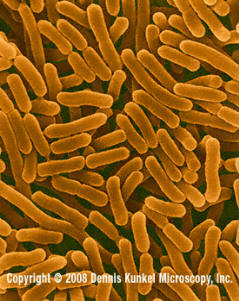Phylogenetic Tree and Meaning
Salmon- (little salmon)
+
-ella (in intestines)

=
Salmonella
enteritidis
enteron = gut
-idis = inflammation
.jpg)
I created this phylogenetic tree (above) based on molecular data. More specifically, this can be done through the use of extragenic palindromic (REP) sequences, the enterobacterial repetitive intergenic consensus (ERIC) sequences, and the 16S–23S rDNA intergenic spacer region (ITS1). Salmonella enteritidis is the most common species of Salmonella that infects humans.

There has been ongoing debate about how the different species and subspecies fit in under the genus, Salmonella. I compiled the information above into a phylogenetic tree based upon the most current commonly accepted system. The old system included the species S. choleraesuis instead of the newly accepted S. enterica. Salmonella enteritidis is a heterotypic synonym of the subspecies, Salmonella enterica subsp. enterica. (S. paratyphi, S. typhi, and S. typhimurium are also heterotypic synonyms of this particular subspecies). Again, these species and subspecies are separated by using molecular tools; DNA-DNA homologie data is commonly used for separation.
If you are feeling daring, click here to see a great outside link that includes Salmonella plus many more types of bacteria and archaea.
Salmonella typhimum
Copyright Dennis Kunkel Microscopy, Inc.
Salmonella enterica
Copyright Dennis Kunkel Microscopy, Inc.
it is time to learn about adaptations of
Salmonella enteritidis!



